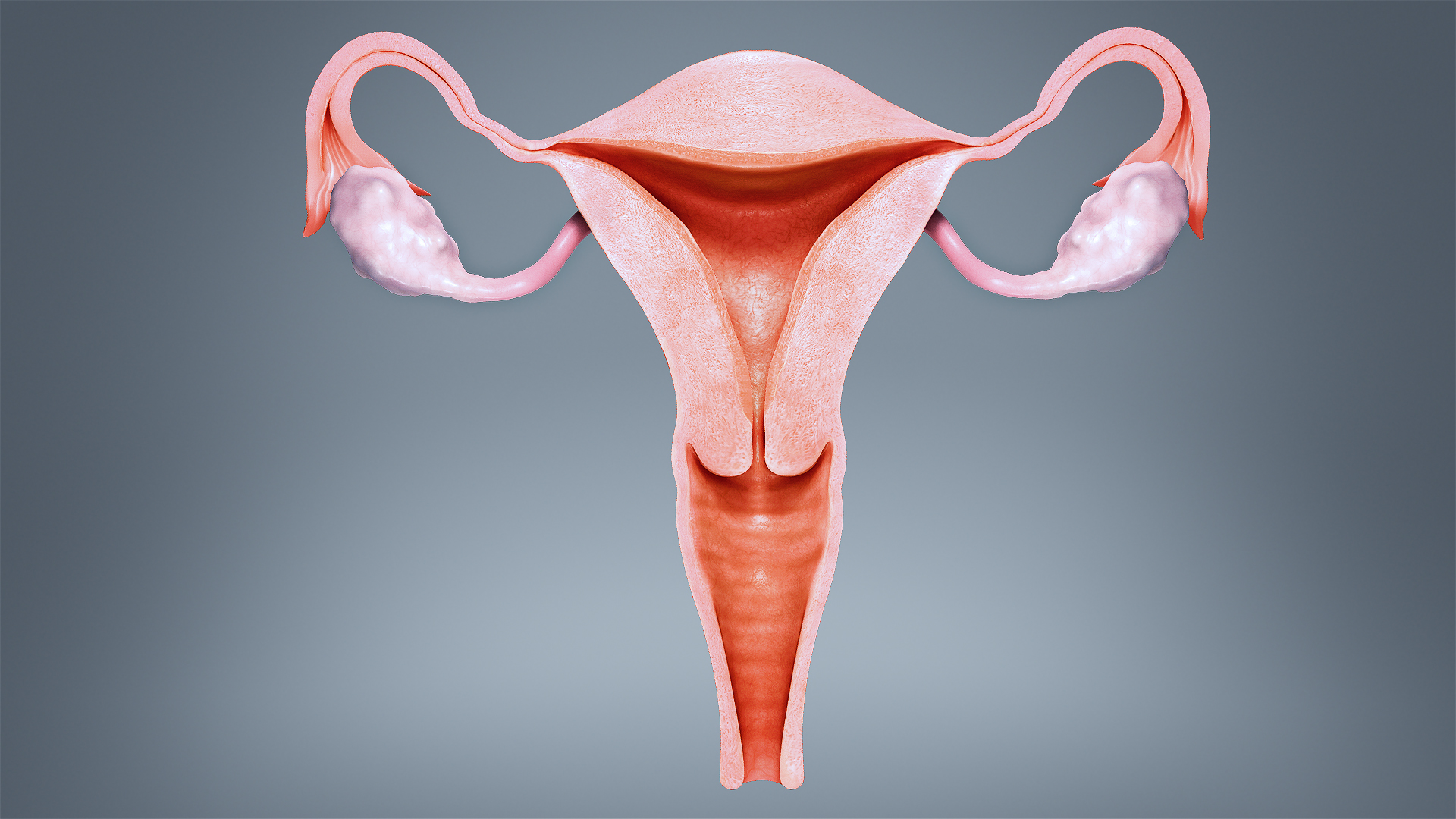The uterus is an organ in the female reproductive system. It is also called the womb. It is a hollow organ and holds the fetus during pregnancy. The uterus has a shape similar to that of an upside-down pear and has thick walls.

It is situated in the middle of the pelvis, behind the bladder and above the rectum. The uterus is held in position by muscles, ligaments and fibrous tissue. The lower end of the uterus is called the cervix and it opens into the vagina. The upper end is called the fundus and is connected to the fallopian tubes. Between the fundus and the cervix is the corpus, which is the main body of the uterus and the isthmus, which is where the walls of the uterus begin to narrow toward the cervix. The uterus is made up of three layers of tissue. The Perimetrium is the layer that lines the outer part of the uterus. The Myometrium is the middle layer of the uterus which consists of smooth muscle while the innermost layer is known as the endometrium.
Functions of the Uterus
The uterus performs multiple functions but the major role of the uterus is to hold the fetus and nourish it till the time of delivery. The uterus accepts the fertilized ovum from the fallopian tubes. The fertilized ovum gets implanted into the endometrium, and the nourishment is derived from the blood vessels which form exclusively for this very cause. The fertilized ovum grows into an embryo, and then develops into a fetus, and grows and develops till childbirth.
It consists of various types of cells that produce and release several types of hormones, including some below:
The uterus is also a secondary sex organ for females. It is required for uterine orgasm to occur. Blood flow is directed to the pelvis, ovaries as well as external genitalia such as the vagina, labia and the clitoris by the blood vessels and nerves of the uterus. The uterus plays a major role in sexual response.
The uterus also provides support to the bladder, bowel and pelvic bones. It separates the bladder and the bowels in females.
Conditions of the Uterus
The most common disorders related to the uterus are:
- Endometriosis is a condition in which the lining of the uterus, which is called the endometrium, grows in the outside of the uterus, in the fallopian tubes, ovaries, or along the pelvis.
- Uterine fibroids are growths on the walls of the uterus, which are not cancerous. These fibroids may not cause any symptoms but could lead to fertility issues.
- Uterine prolapse occurs when part of the uterus slips into the vagina. Surgery, childbirth, menopause, or extreme physical activity are some of the causes of uterine prolapse.
- Pelvic inflammatory disease is an infection in the reproductive organs of the females. If this disease is not treated, it could lead to an ectopic pregnancy.
- Cancer can occur in any part of the uterus but it is most common in the endometrium.
About 1 out of 300 women also suffer from congenital uterine conditions such as septate uterus (a band of muscle divides the uterus into two separate sections), bicornuate uterus (the uterus has two smaller cavities instead of one large one), didelphic uterus (the uterus has two smaller cavities, each with its own cervix), and unicornuate uterus (only half the uterus forms).
The symptoms of most uterine conditions are heavy periods, bleeding between periods, foul-smelling vaginal discharge, pelvic or lower back pain, pain during menstruation or intercourse and, pain during urination or bowel movements.
The uterus is a very important organ for females and to keep it healthy one should get routine pap smears, get vaccinated against HPV, avoid smoking, and eat a healthy diet rich in folic acid, Vitamin E, Vitamin C and beta carotene.
Disclaimer: The information in no way constitutes, or should be construed as medical advice. Nor is the above article an endorsement of any research findings discussed in the article an endorsement for any of the source publications.
Sources-
- https://www.news-medical.net/health/What-Does-the-Uterus-Do.aspx
- https://www.healthline.com/human-body-maps/uterus#health-tips
- https://www.verywellhealth.com/uterus-location-function-female-anatomy-3157180
- https://en.wikipedia.org/wiki/Uterus#Function
A crucial part of treating Cervical Cancer is determining its development stage - early, medial or advanced. Early stage cancers are confined to only the cervix region and can be treated in one of the following ways:
Read More..
The uterus isn’t merely a childbearing organ. It has other important functions, including:
Read More..











